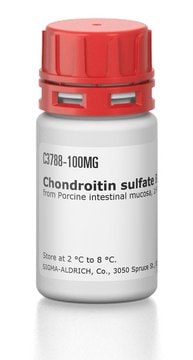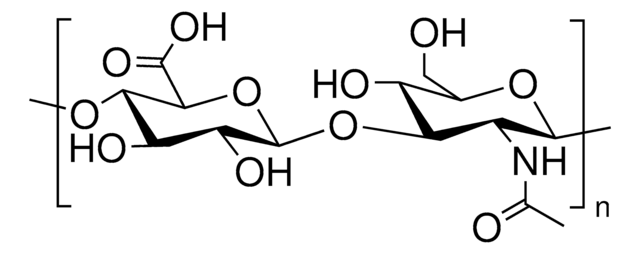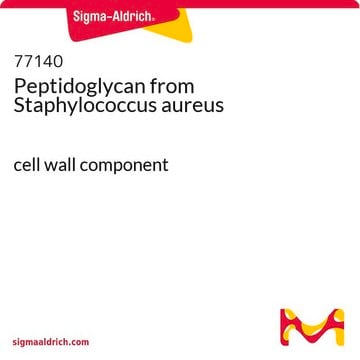The stability of stock solutions of this enzyme has not been evaluated. However, it is cited in Methods in Enzymology, 165, 3-7 (1988) that at concentrations greater than 2 mg of protein per ml it can be stored at -20 °C without loss of hemolytic titer.
推荐产品
生物来源
Staphylococcus aureus
质量水平
表单
lyophilized powder
比活
≥10,000 units/mg protein
包含
sodium citrate buffer as balance
组成
Protein, ~60% Lowry
溶解性
H2O: soluble 0.49-0.51 mg/mL
UniProt登记号
储存温度
2-8°C
基因信息
Staphylococcus aureus ... SAOUHSC_01121(3920722)
应用
- 作为电解质溶液的一种成分,用于通过电生理测量测试脂双层中的孔形成[2]
- 测试其在骨髓基质细胞(BMSCs)中的成骨抑制作用[3]
- 制备用于 Biacore 和表面等离子体共振的α溶血素分子印迹聚合物 (MIP)[4]
生化/生理作用
包装
单位定义
警示用语:
Warning
危险声明
危险分类
Eye Irrit. 2 - Skin Irrit. 2 - STOT SE 2
靶器官
Lungs,Blood
储存分类代码
11 - Combustible Solids
WGK
WGK 3
闪点(°F)
Not applicable
闪点(°C)
Not applicable
个人防护装备
Eyeshields, Gloves, type N95 (US)
历史批次信息供参考:
分析证书(COA)
其他客户在看
相关内容
Cell lysis and protein extraction methods overview various techniques, from detergent solubilization to mechanical disruption, supporting research needs.
Cell lysis and protein extraction methods overview various techniques, from detergent solubilization to mechanical disruption, supporting research needs.
Cell lysis and protein extraction methods overview various techniques, from detergent solubilization to mechanical disruption, supporting research needs.
Cell lysis and protein extraction methods overview various techniques, from detergent solubilization to mechanical disruption, supporting research needs.
-
We suspended in the product H9395 in 12.5 ml of PBS (our usual water-based infection solvent), flash-froze the aliquots in liquid nitrogen, and stored the aliquots at -80 C. There was no apparent issue with resuspension in PBS vs water. However, we observed no hemolytic activity in our in vivo mouse study or an in vitro quantitative hemolysis assay performed with rabbit blood.
1 answer-
Helpful?
-
Active Filters
我们的科学家团队拥有各种研究领域经验,包括生命科学、材料科学、化学合成、色谱、分析及许多其他领域.
联系技术服务部门













